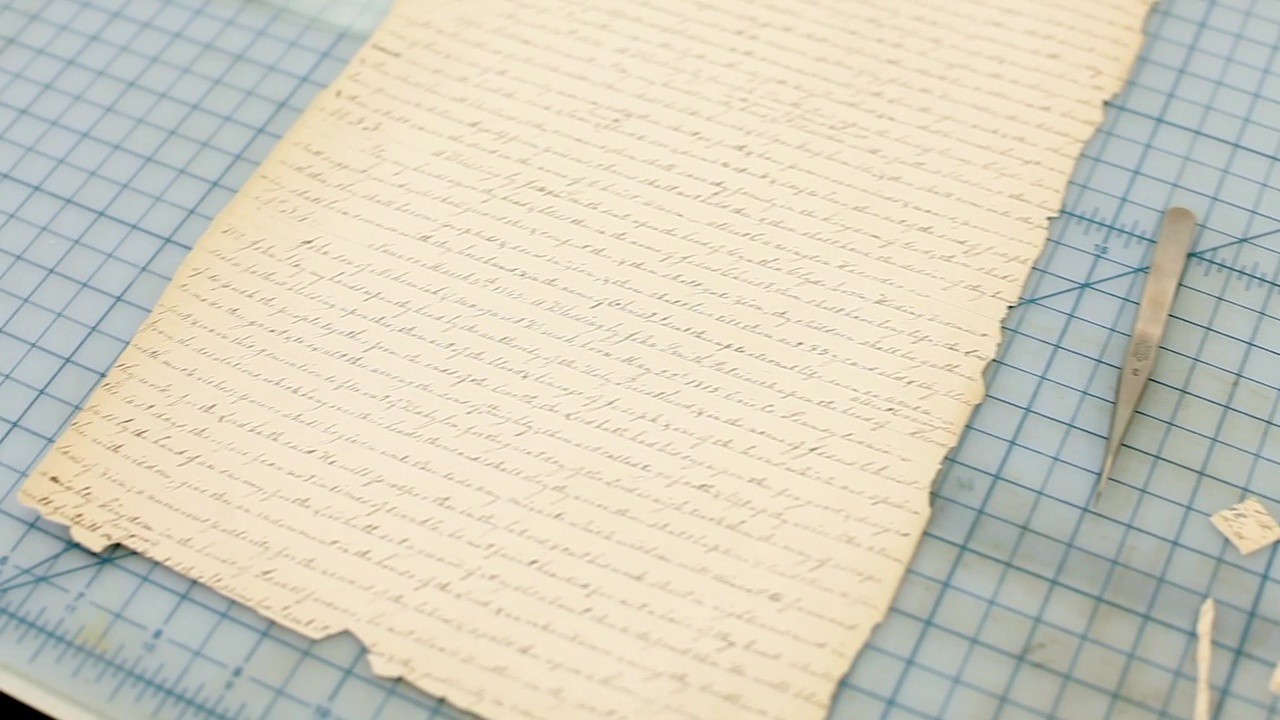
Transcript
Hugh Findlay, my great-great-grandfather, was born in 1822 in Scotland, and at age 22, he was converted to the Church. And then he received a letter from Elder Lorenzo Snow calling him to serve a mission in India. As far as I can understand, the information would help researchers because it would give background about where missionary work was done in India, and it's going to be preserved better by the Church than it would be keeping it in a file cabinet. Donating a document is the best way to diversify the number of people who can look at the document. The ARC team, which stands for Acquisitions and Receiving Center--they're the ones who receive the material, evaluate it, and appraise it, determine whether or not we do or don't want it. They look to see if there is a duplicate in the collection. Sometimes there is, and sometimes there isn't. And in this case, it's a journal about a missionary who served in India. So, we're going to be pretty excited about getting that. When new items are acquired in the collection by the acquisitions group, they will bring it to me to evaluate its condition and to help decide whether the item should be repaired or stored as it is. One of the things that worries historians is the preservation of documents, and one thing that we see over the course of time is the paper, for example, becomes extremely brittle. So, there are old documents that, if they're left in the hands of family members, they literally crumble to their end. So, this item was recently acquired, and we made a decision together to do some minimal treatment on this item. We feel like this might be heavily used, so we want to make sure that it doesn't become more damaged in the process of use. So, we've received this from conservation now, and we want to be quite delicate with this journal. As an archivist, our responsibilities include dealing with any unpublished material that comes into the department. That could be hand-drawn maps. It could be journals. It could be correspondence. It could be a variety of things that are not published, as what we deal with is one-of-a-kind, unique material. When we receive this journal that came in this morning, we want to start capturing the important information. Most of the work on this floor is research to see if we need it in the library, and then we formulate a process in which it is sessioned into the collection. I will put this journal in a folder, which I received it in. I will add a bar code and scan that so we know that the item is identified, and then I send it to collection care, where they then scan it into the system and place it on the shelf where it can be called for by a patron. Once an item has been acquired and described and cataloged, and everything has been taken care of in that regard in the cataloging realm and collections development, the new item, as we call it, then comes to my team. We help get them into the secure stacks. There is a special fire suppression system. There are earthquake systems in place. There-- we have our temperature and humidity control systems in place. All of these things are to preserve and protect these sacred and precious artifacts that we have here in the library. Well, I feel that Hugh Findlay would be happy that we donated his journals to the Church. It would have been, I think, what he would have wanted to have happened and to know that they've been donated to a place where they will be taken care of and kept. This is probably the best time in the history of the world for preserving documents. Not only can families receive a digital scan of a document that they donate, but that document then becomes available for future family members to come and pore over its pages.